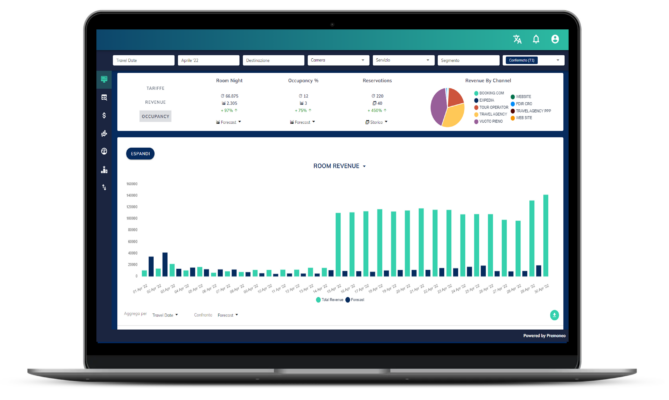The travel and hospitality industry are looking to the future with moderate optimism. This is what emerges from the most recent research and events. But what are the areas on which hospitality players must concentrate their efforts to define a correct strategy?
The current geopolitical scene has dealt a new blow to tourism after the pandemic. The Russian-Ukrainian conflict has slowed down a positive trend that had begun to take its first steps forward in 2022. Precisely because of these constant shifts in demand and in the consumer’s propensity to travel, the sector must be ready to respond to an increasingly last-minute traveller looking for flexibility.
Furthermore, it is essential to bear in mind that the hospitality sector is among those that have been most impacted by technological innovations in recent years, with a multiplication of tools to support ownership and management decisions. This exponential growth has, on the one hand, reduced day-to-day operations and make processes more efficient, but it has also increased the level of heterogeneity of the information available to hospitality businesses. What are the key areas to focus on to implement a correct and effective strategy? We have listed the three main ones in this article.
Prediction
Forecasting is a strategically important tool in the world of hospitality because it allows us to obtain valuable information about future customer behaviour and, consequently, to orientate choices to maximise commercial goals.
In the hotel sector, forecasting consists of predicting demand in terms of Room Night (length of stay), Room Revenue (revenue per occupied room) and consequently Average Daily Rate (ADR) and Revenue per Available Room (RevPar) based on the analysis of a multiplicity, more or less extensive, of variables.
The forecast can refer to real demand or total demand: in the first case, the estimate concerns the value of occupancy and revenue expected based on the actual availability of beds in the structure; in the second case, however, the forecast refers to potential demand, “unconstrained demand”, which therefore does not take into account the actual capacity of the structure but gives information net of possible constraints.

The variables used to elaborate the forecasts may concern historical sales data, the bookings made in the past by the facility and, in general, by the destination in question, data relating to bookings received from competitors, air and tourist flows in general, the presence of events or holidays, and any other factor for which there is a significant level of correlation with the facility’s sales.
Therefore, a prediction of this type allows the pricing strategy to be quickly adjusted according to the trend in demand and the evolution of purchasing behaviour. It can also be a useful tool for correctly determining the number of rooms to be allocated to each sales segment, implementing an effective nesting strategy. And finally, it can also strategically guide marketing actions to reach potential customers.
Pricing
The issue of pricing is of strategic importance for the achievement of the commercial objectives of each property. Generally, one of the objectives that one tends to achieve is the occupancy of the property, so define the price to maximise occupancy.
A second strategy is based on the prices charged by competitors, whereby the aim is to charge a price that is cheaper than the competitive set.
A third approach is linked to sales forecasts. In this case, the price is defined based on the forecast calculated for the available rooms. To rely on this strategy, it is essential to have an accurate sales forecast and tools that can intercept fluctuations in demand reactively.
From these simple approaches and their combination, increasingly complex pricing models can be developed to accommodate situations of increasing complexity.
Generally speaking, before defining the pricing model that best suits the strategies of an individual hotel, it is necessary to carry out a thorough analysis of the available endogenous and exogenous data to identify the variables that have the greatest impact on demand.

Analysis
Data analysis is the element from which prediction and pricing cannot be ignored.
In particular, by analysing sales data it is possible to identify insights that can guide strategic business decisions. However, it is the quality of the data and the know-how available to analyse it that makes the difference between the different players on the market.
The first thing to consider when it comes to analysing data in the hospitality industry is to ensure that you have the maximum level of detail from individual data sources, such as PMSs, Channel Managers and GDSs, and to make this often heterogeneous data uniform for analysis. Therefore, the data collection and preparation phase is crucial. Once it is certain that the data is correct and uniform, it is important to define parameters for comparison and synthetic indicators that are explanatory of one’s economic situation. Otherwise, there is a risk of making comparisons that are not homogeneous and therefore misleading concerning the results obtained.
Generally speaking, having a team and an IT support able to understand the characteristics of your business, standardise, collect and correctly analyse the available data, draw up an accurate forecast and define the pricing model able to maximise your business objectives is important to survive in such a rapidly changing market.


